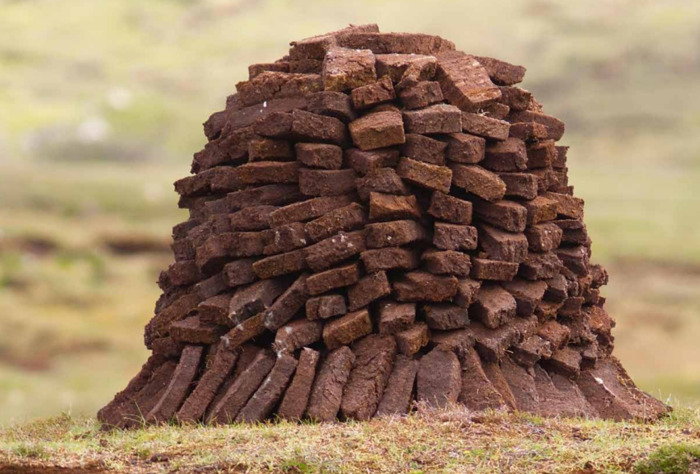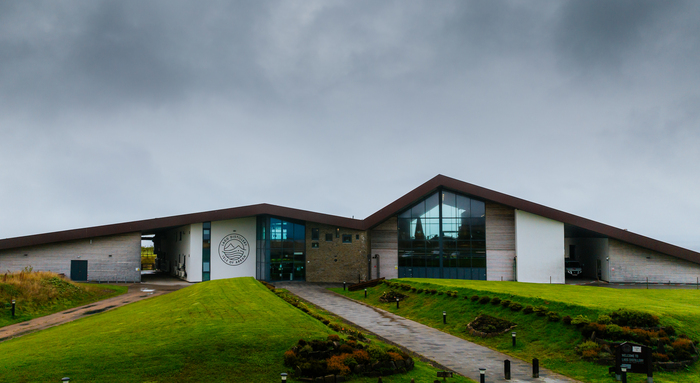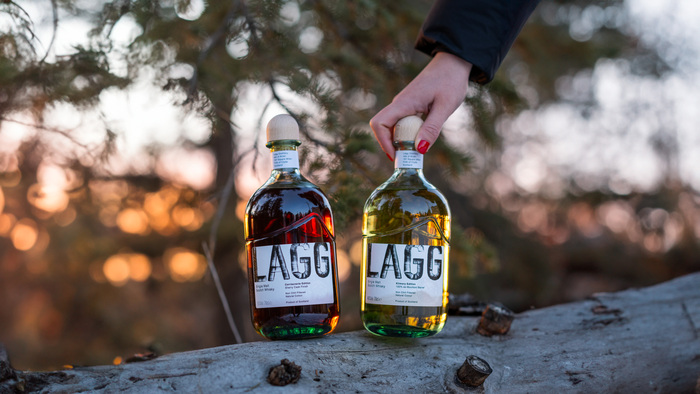What is Peated Whisky? Exploring the Smoky Depths
From the lowlands to the Highlands, Scotland is a varied and vibrant country. And in no more spectacular manner is this demonstrated than in the wide array of single malt whiskies produced in the country.
Among these, peated whisky holds a special place, offering a rich, smoky flavour profile that sets it apart from other whisky styles. But what exactly is peated whisky, and why is it loved by whisky enthusiasts around the world?
What is peat?

Made of decomposed vegetation, peat is commonly discovered in damp habitats like swamps and bogs, areas that Scotland abounds with. These bogs form gradually over millennia. Taking on a brick-like appearance and possessing a texture akin to a sponge, peat's significance as a resource stems from its high carbon content. Essentially a highly concentrated source of energy, peatlands harbour more carbon than all other forms of vegetation combined, historically rendering it a valuable fossil fuel. This is why, centuries ago, the inhabitants of Arran used this readily available fuel source for all kinds of industry, including whisky-making.
What do we mean by peated whisky?
In the world of whisky, peat plays a crucial role in the malting process. When barley is malted, it is dried over a fire. In peated whisky, peat is added to this fire. When used to dry malted barley, the peat smoke, which contains aromatic compounds including phenols, guaiacols, and syringols, infuse into the grain. The malted barley then goes through milling, mashing, fermentation and distillation to create new make spirit, the character of which will be distinctive and unique to that distillery, depending on a number of decisions made by the distillery manager. The flavours intensify during maturation to create a whisky with a bold, yet nuanced and layered, flavour profile.
Peat can evoke a wide range of flavours, depending on where it comes from and how it is used. Common tasting notes associated with peated whisky include smoke (the scent of a barbecue or bonfire), earth (damp woodland or forest) and medicinal (iodine or antiseptic).
An acquired taste? Peated malts can certainly be a divisive topic between friends who enjoy a visit to a whisky bar, but some say that all whisky drinkers eventually become peated whisky drinkers.
How do we measure peatiness?
The level of peatiness in a whisky is measured in phenol parts per million (PPM). This gives an indication of how intense the smoky flavour will be. For example, whiskies with a PPM of 1-10 tend to have a gentle smokiness, while whiskies with a PPM of 30 or more can be bold and heavily peated.
While PPM gives a clue to the strength of peat influence, it’s worth noting that the final product also depends on the distillation process, maturation, and the type of casks used for ageing. Thus, two whiskies with the same PPM can taste remarkably different.
Scotch whisky regions known for peated whisky
The two biggest regions for producing peat and peated single malt are the Highlands and Islay, and each has its own unique flavour profile associated. Islay, with its rugged coastline, sea-based vegetation such as seaweed, and fresh sea air, tends to produce peat with more of a maritime, ocean-kissed quality. Highland peat, on the other hand, tends to be intensely early and rich because it’s found inland.
The use of peat in whisky production is not universal. Some distilleries prefer to lean towards non-peated expressions when developing their whisky. Using fuel sources such as coal and coke led some distilleries to abandon peat in favour of a milder taste. Regions like the Lowlands and Speyside generally continue to embrace un-peated whisky, drawn by the even burning and reduced smoke of coke.
Despite the divergence in preferences, peated whisky remains a cornerstone of Scotch whisky heritage. Its allure lies not only in its smoky flavours but also in its authenticity and connection to whisky's storied past of smuggling, piracy and illicit stills - lore particularly relevant to the Isle of Arran, home of our peated malt distillery, Lagg.

At Lagg Distillery, we continue a centuries-old tradition of using peat in the kilning part of the whisky-making process to create single malt whiskies with rich, deep phenolic flavours - a character demonstrated in our Lagg Single Malt Core Range, the Corriecravie Edition and the Kilmory Edition.

For many people, whisky, or scotch as it can be called (but only if it is distilled and aged in Scotland, of course!), embodies a rich tapestry of tradition, heritage and unrivalled craftsmanship - and this is never truer than with Lagg’s peated whisky. At Lagg Distillery, named Distillery of the Year 2023, we offer a fantastic tour called the 'Arran Water Tour', that gives you the opportunity to deep-dive into the Isle of Arran’s rich history of illicit distilling and whisky smuggling. Follow it up with a tasting and lunch in our incredible cafe or whisky bar, which looks out over the sea to Ailsa Craig.
Slàinte Mhath!
Lagg distillery
Visit us at Lagg distillery. Book a tour or a tasting, pop in for something to eat, or sample a wee dram while enjoying the view out to Ailsa Craig
Visit Lagg distillery


